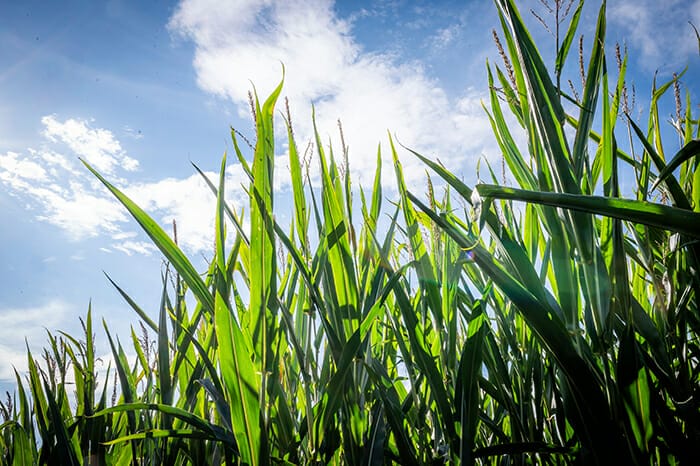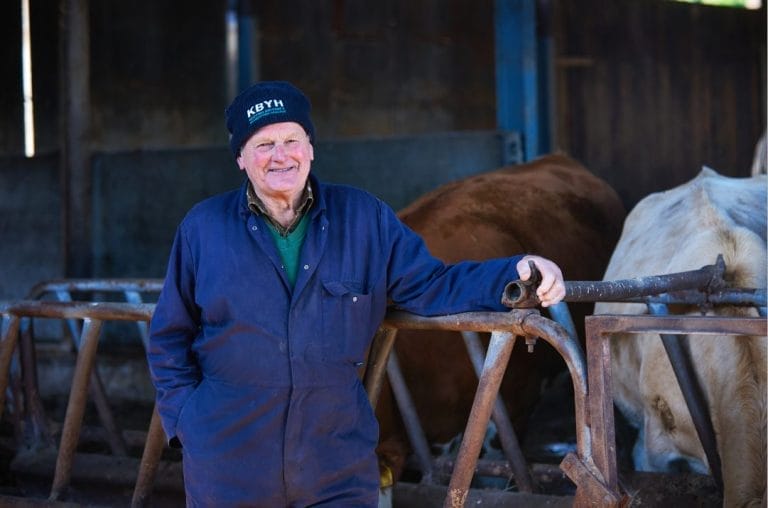Across the country, farmers faced challenging conditions to get maize established but the focus now has to turn quickly to ensuring a successful harvest to ensure a quality feed to compliment variable grass silage.
Simon Pope from Wynnstay comments that he can not remember a season in recent years where the average drilling date was so late. “We saw very little maize drilled in late April as it was cold and dry while most of May was cold and wet. The main drilling window became late May and early June.
“Across Wales and the West Midlands crops are beginning to catch up but a lot will depend on the weather from now on and how rapidly the Ontario Heat Units that drive maturity accumulate.
“One of the stand-out varieties for early vigour and rapid establishment under difficult conditions has been LG Gema. In a shortened growing season high-performing, very early varieties such as Gema really come into their own.”
Agrii National Forage Product Manager Ben Lowe says late sown maize has got going very well and in many cases is further advanced than earlier drilled crops where the seed took a while to get going. Many crops are looking better than crops sown in late April in a typical year.
“This is largely because later drilled crops were actually sown in optimum conditions with warm soils and adequate moisture and I hope growers remember this in future seasons and throw away the calendar and instead take decisions based on the conditions.”
He suggests there is little if any point establishing crops in poor conditions, and it is always better to wait. That said you need to choose the appropriate variety. Drilling late and still harvesting at the normal time truncates the growing season and makes the choice of early maturing varieties essential.
A late drilled late maturing variety may struggle to mature with the consequence of harvesting too soon or having to delay harvest and risk poor conditions

Resolute Maize
“LG Resolute for example is an excellent early maturing variety which has outstanding early vigour to get away quickly. But it is also the highest on the NIAB/BSPB list for dry matter and ME yield making it an excellent candidate for delaying drilling to ensure optimum conditions.”
Richard Camplin, LG Technical Manager is responsible for the company’s network of trial plots and agrees it might be time to rethink maize planning. He says the trial plots had to be drilled later this year with the latest plots at the Bangor site in North Wales only drilled at the end of May.
“Going in late, the tilth was good, and soil was warm. We drilled the seed shallower, and we saw emergence after just six days, and these are now probably the strongest plots we have. It is about planning for the conditions.
“Later drilled crops has caught up quickly and also have higher plant populations. We have not lost out and earlier varieties lime Saxon, Dignity and Prospect are looking good with the ability to allow an early harvest,”
He comments earlier drilled crops had higher field losses and poorer plant populations and we have had reports of this from across the country. Seed was drilled deeper in cold soils and struggled to get away. This is not to say these crops will not yield well as with fewer plants there will be less competition.
“The challenge now will be to gets crops harvested at the optimum time. With variable grass silage reported across the country, dairy producers will be looking for a high-quality maize forage but also a feed that can be incorporated in diets quickly to complement the other forages.
“To achieve this will require a commitment to monitoring the crop and being flexible about harvest date rather than harvesting on a set date
He says maize should be harvested when the crop combines maximum starch content with only limited leaf die back so maintaining high digestibility in the vegetative part of the plant. At the same time, the crop must have sufficient moisture to allow effective compaction in the clamp. Harvesting a crop too soon will result in sub-optimal starch content, as sugars will not have been converted into starch.
Equally, delaying harvest will result in poorer digestibility of the vegetative part of the plant and reduce digestible fibre which is essential for rumen health. He advises modern varieties stay green for longer and do not to go brown before being harvested.
“Harvesting date is not a direct function of drilling date but is influenced by OHU accumulation in the growing season with early maturing varieties requiring fewer units. It is entirely likely that an early maturing variety drilled late could be ready for harvest sooner than expected.
“We regularly run NIRS clinics at markets, allowing farmers to bring plants to assess maturity and fitness for harvest. Whilst in most years a significant proportion of plants are more mature than the grower expected, this may not be the case this year. However, to avoid issues from harvesting at the wrong stage we would still urge farmers to start monitoring crop sooner than later.”
Mr Camplin recommends starting to walk the crop from mid to late August to assess maturity and fitness to harvest, to prevent crops going over. He advises walking well into the crop and looking at plants in several locations. Never evaluate plants on the field margins.
He says that modern varieties often remain green to maturity, and it is a misunderstanding that maize needs to be dead before harvesting. The target range for an optimum crop is 32-35% dry matter. At dry matter levels higher than this, palatability and intakes can be reduced, digestibility will be compromised, and the crop may prove difficult to consolidate, increasing the risk of aerobic spoilage.
“Crops typically dry down at 2% per week so, it is important to start measuring dry matter and assessing maturity, so you aren’t caught out.”
To assess the maturity of the vegetative material he advises looking at the flow of juice from the stem. “Look to harvest when no juice emerges as the stem is twisted, and when the leaves level with the cob are just beginning to turn brown.
Then assess the grains using the thumb nail test. The grains at the top of the cob should be like soft cheese, the ones at the bottom should be like hard cheese and the ones in the middle should be soft enough to leave the imprint of a thumbnail on.
He suggests farmers download the LG Maize Manager App onto their phones. The Harvest Manager module assesses the condition of the crop and advises on target harvest date to ensure the crop is cut at the optimum dry matter to maximise feed values and fermentation quality.
Based on the dry matter of the cob and of the stem, the app will determine if the crop is ready for harvest and recommend a cutting date. If harvest is not imminent the app uses postcode related weather data to predict when the crop will be suitable for harvest.
“By walking the crop and assessing the state of maturity and the rate at which dry matter is increasing, you increase the prospects of harvesting the crop at the optimum stage to maximise the production of high-quality forage,” Mr Camplin points out. “The app will then improve the precision of harvest timing, helping maximise the value of the crop they have grown and reduce the risk of incorrect harvest date on silage quality.”
Download the FREE Maize Manager App and see how it can help you!



































